RUTHERFORD, Calif. — Jameson Humane’s WineaPAWlooza, now in its 10th year, raised $1.5 million this past weekend to further numerous animal-welfare projects. These include helping with domestic animal rescues during wildfires, facilitating pet-food distribution in 25 states, supporting local spay and neuter programs and enhancing animal welfare in and beyond Napa Valley.
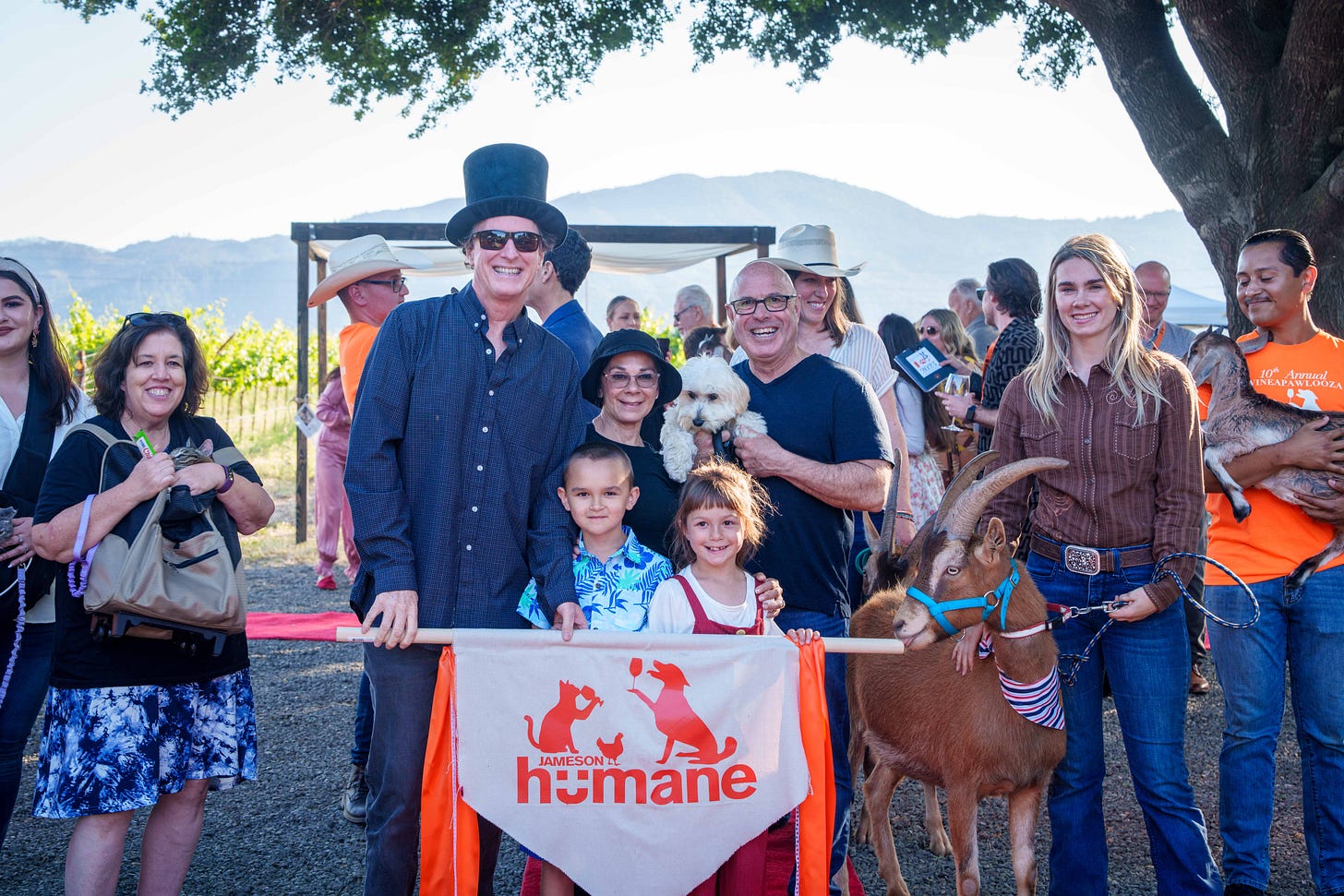
The fundraising event started on Friday at Memento Mori Estate in Calistoga with an educational session on innovative winery and viticulture practices aimed at reducing the industry’s carbon footprint. On the second day local wineries shared their wines with more than 300 attendees who indulged in gourmet plant-based food and enjoyed a lively animal parade. The event’s highlight was a wine auction that featured some of the most prestigious wines from all over the globe.
After nearly four hours of tasting numerous red, white and sparkling Napa Valley wines and eating a lavish vegan dinner, auctioneer Fritz Hatton started the bidding on a rare 6-liter bottle of 1999 Screaming Eagle Cabernet Sauvignon.
“The last one I sold was for $500,000 years ago,” he said, starting the bidding on Saturday at $50,000. Bidders were quickly willing to spend $90,000 as it was clear several people were interested in that bottle of wine — one of only two produced from a tiny Oakville vineyard.

It is the ultimate Napa cult wine, created by legendary winemaker Heidi Barrett. The 1999 wine came from the cellar of Screaming Eagle founder Jean Phillips, who donated it for the auction. The Saturday event was held at the Beckstoffer Farm Center in Rutherford.
Before the auction Hatton was asked what the wine would sell for, but he wasn’t playing that game, saying maybe $50,000, just one-tenth of the 1992 Screaming Eagle Cabernet Sauvignon that he sold at the 2000 Auction Napa Valley sponsored by the Napa Valley Vintners.
But on Saturday night his estimate was, shall we say, wrong. Wine collector Jeffrey Miller of St. Helena and Miami paid $125,000 for the 6-liter bottle of Screaming Eagle Cab. Jameson co-founder Monica Stevens said Miller bought the Screaming Eagle lot last year, as well. When he won this one he joined the cheering and clapping in the room and raised both of his hands, a huge smile on his face.
That night bidders pledged $250,000 for the Fund-A-Need lot, called “PAWS for a CAUSE,” paying for access to affordable veterinary care from their Mobile Veterinary Unit. The veterinary care includes preventive care, spay/neuter services, and medical procedures and surgeries. In the past six years Jameson Humane has vaccinated and microchipped more than 6,000 animals. In the past two years the group has provided more than 1,500 spay/neuter surgeries for both its rescue partners and the low-income community; and this year they provided 40 lifesaving emergency surgeries.
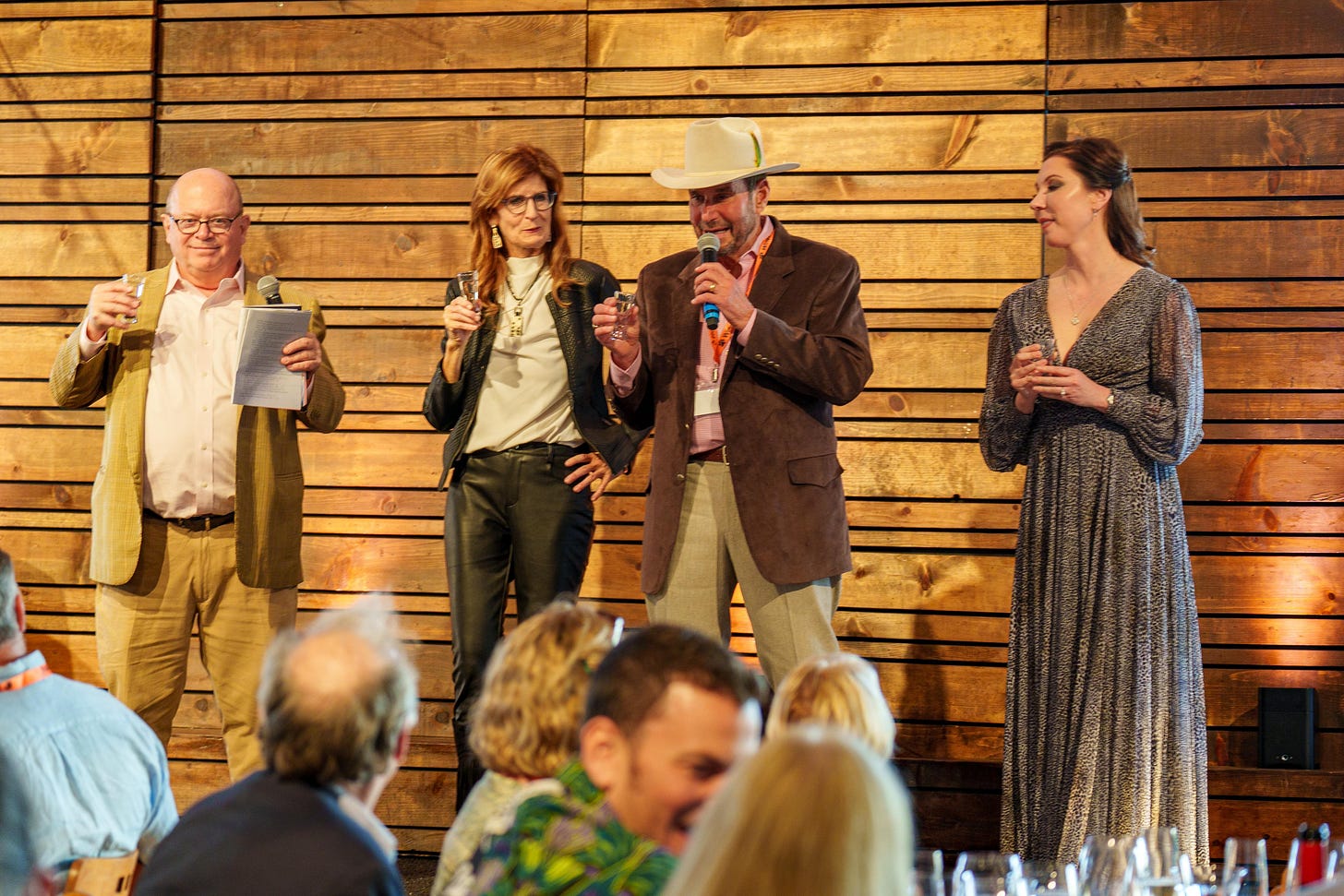
On Monday Stevens reflected on the event that had raised $1.5 million, with the live auction netting $1.25 million for the animal-welfare organization.
“I was most surprised at the weather,” she said. “Every year it is 100 degrees and uncomfortable.”
But not this year. It was delightful, with a cooling breeze blowing through the canopy tent from the surrounding vineyards. Additionally, Stevens said she was “thrilled by the energy under the tent and the love for Jameson Humane” shown by the spirited bidding for the 18 lots. When a video played showing scenes from 10 years of WineaPAWlooza, people started clapping. They loved the scenes from the past decade, including seeing old friends, among them Monica’s husband, Dave Stevens, co-founder of Jameson Humane.

Both Saturday’s vegan appetizers and the lavish sit-down meal were created by Deborah Blum and her Goatlandia Kitchen team from Sebastopol. Friday’s fare was from DGS Culinary in Napa, owned by Daniel Gomez Sanchez, formerly of Cyrus, The French Laundry, La Toque and winner of Food Network’s Chopped Grill Masters, Napa.
Other lots sold
Other lots Hatton sold included a luxury trip to Champagne ($32,000) and 50-plus Magnificent Magnums, from Antix Wines to Zakin Wines, that sold for $50,000 (of course). Some lots came with lots of horsepower: 20 guests each paid $3,000 for a road rally with vintners in their vintage sports cars, brunch and lunch in June 2024 on the day after the 2024 edition of WineaPAWlooza. A trip to Newport with plenty of food, wine and activities went for over $30,000.
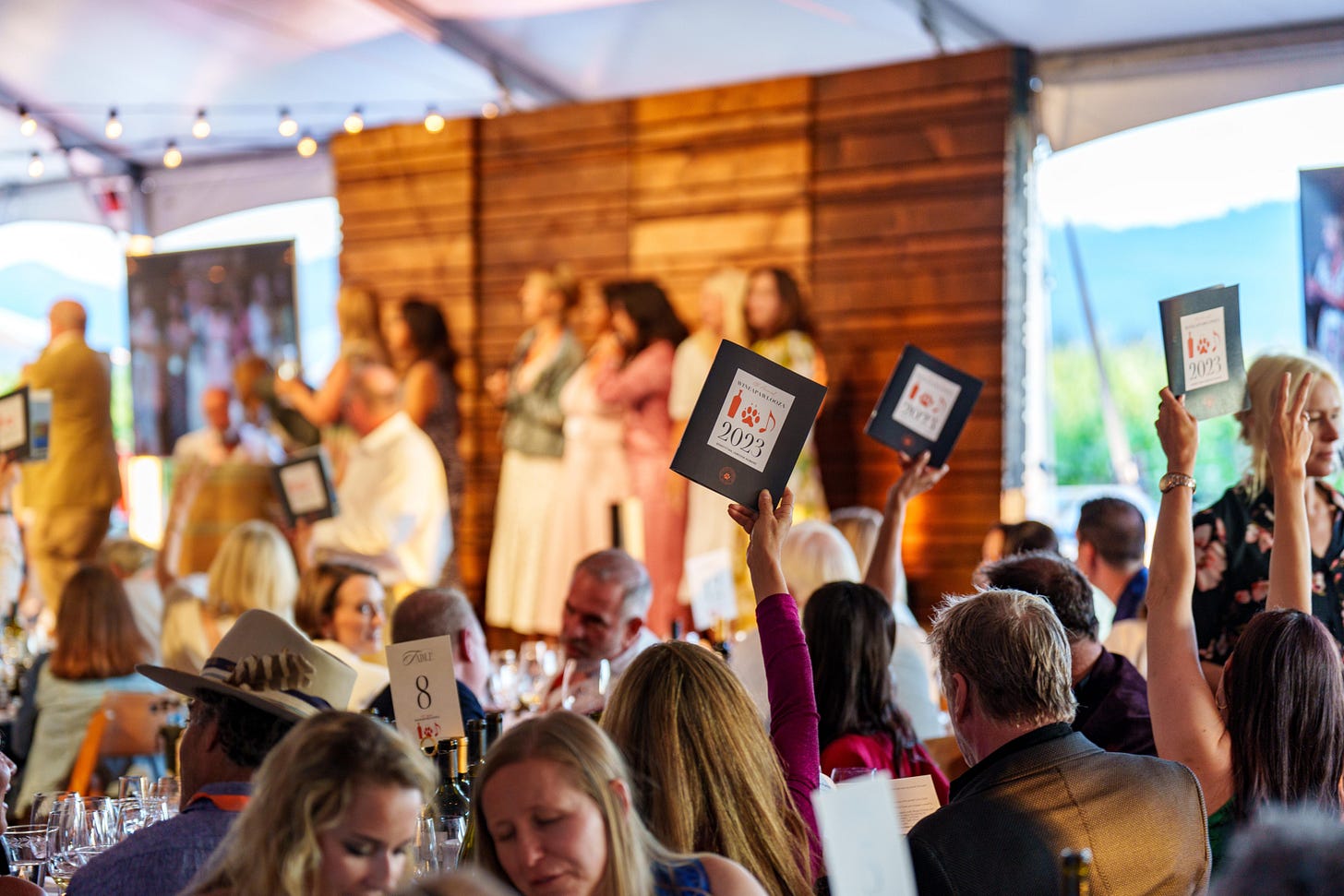
Stevens saw a lot of new bidders raising their paddles this year, especially for a lot from host Andy Beckstoffer and winemaker Russell Bevan. The lot was a barrel (20 cases) of 2023 Cabernet Sauvignon made from grapes grown in Beckstoffer’s Melrose Vineyard in Rutherford.
Hatton started the bidding at $100 a bottle, or $24,000, but it quickly went to $36,000 and then $45,000. Hatton then asked for $50,000, commenting that Bevan has made three vintages from the Melrose Vineyard and all have scored 100 points.
After Beckstoffer reminded the crowd that the money they were spending was to help the animals, the bidding reached $75,000, or $3,125 a bottle. When it was clear two people were interested in the lot, Beckstoffer and Bevan sold two barrels of the rare wine and $150,000 was raised.
At 9:20 p.m., when it was mostly dark outside and the auction had ended, Hatton addressed the boisterous crowd.
“Thank you so much,” he said. “Enjoy your evening and never forget the animals.”
The DJs cranked up the music, and the waitstaff cleared the glasses from empty tables to get a jump on cleaning up. For some it was time to head home; for others it was time to linger for a while, to enjoy a magical evening for a little longer.

Innovations in wine
The night before the auction, on Friday, it was all about innovation and education as 170 people attended a vintners’ panel discussion hosted by Adam Craun at his Memento Mori Estate on Diamond Mountain in Calistoga.
Panelists were Anna Brittain from Napa Green, Jaime Araujo from Trois Noix Wines, Beth Novak from Spottswoode Estate Vineyard and Kia Behnia, proprietor of Neotempo Wines. Master of Wine Vanessa Conlin, a longtime Jameson board member and co-chair of the auction, was moderator.
The event included information on how consumers can work with wineries to help the planet: Ask them not to ship wine bottles in expanded polystyrene foam products but instead to use corrugated cardboard. Ask wineries to stop using heavy glass bottles and buy wine with the Napa Green logo on their labels.
The evening also included an appearance from actress, model, philanthropist and documentary filmmaker Katie Cleary, who showed a clip from her documentary “Why on Earth” She is founder of Peace4Animals and founder and editor of World Animal News.
Lighter-glass bottles
The husband-and-wife team of Kia Behnia and Tracy Borman from Neotempo Wines poured their 2021 Cabernet Sauvignon from their new lightweight glass bottle on Saturday night. The Cab is “on the younger side, but it’s drinking really well,” Behnia said. It was made from the organic vineyard they planted a dozen years ago.
After the 2017 wildland fires, Behnia said he and his wife “became much more active in figuring out the best ways we can help do our best against climate change.” They focused on the glass bottle since he said it is the No. 1 contributor to the carbon footprint of a winery. That footprint includes shipping the glass bottle from manufacturing to the winery, to the distributor and finally to the consumer. The heavier the bottle, the more it costs in diesel fuel to ship and the more space it takes up.

“It is something that’s silly,” he said. “We went from perfectly fine glass bottles in the ’80s that weighed 500 to 600 grams (1.1 pounds) up to some of the Napa Cab bottles that weigh a kilogram or 1.2 kilograms (2.6 pounds) for the same 750ml bottle. That’s what has been going on in the last decade.”
Behnia said he started talking to glass manufacturers, looking at options, trying to figure out a better way. The bottle had to be designed to be strong and lightweight, although not so lightweight that it could break, which would defeat the purpose. The new bottle also had to fit in every existing cellar, storage case and bottling line.
After 40 different permutations of a lighter bottle, Behnia found what he was looking for: a bottle that is round on the bottom, like a traditional bottle, but is shaped like a hexagon on the shoulder, which he says is the strongest shape in nature. It is also slimmer than other 750ml bottles. He has partnered with a company in Spain.
“Part of my challenge was finding a company that has figured out how to make a 100% recycled glass bottle,” he said. “The reason 100% matters as compared to 60% or 70% is that the furnace used to create the glass runs at a much lower heat, which brings down the overall carbon footprint. This is technology that we need in the U.S. right now.”
But the problem is that Americans recycle 31% of their glass, not enough, as compared to 70% in Europe.
“We have to get the word out in Napa, Sonoma and regionally that the more we recycle glass, the more possible it is to have a circular economy where we take perfectly good bottles and turn them into lighter-weight bottles,” Behnia said.

Dave Stoneberg is a journalist who most recently worked for the St. Helena Star from 2006 to 2020.





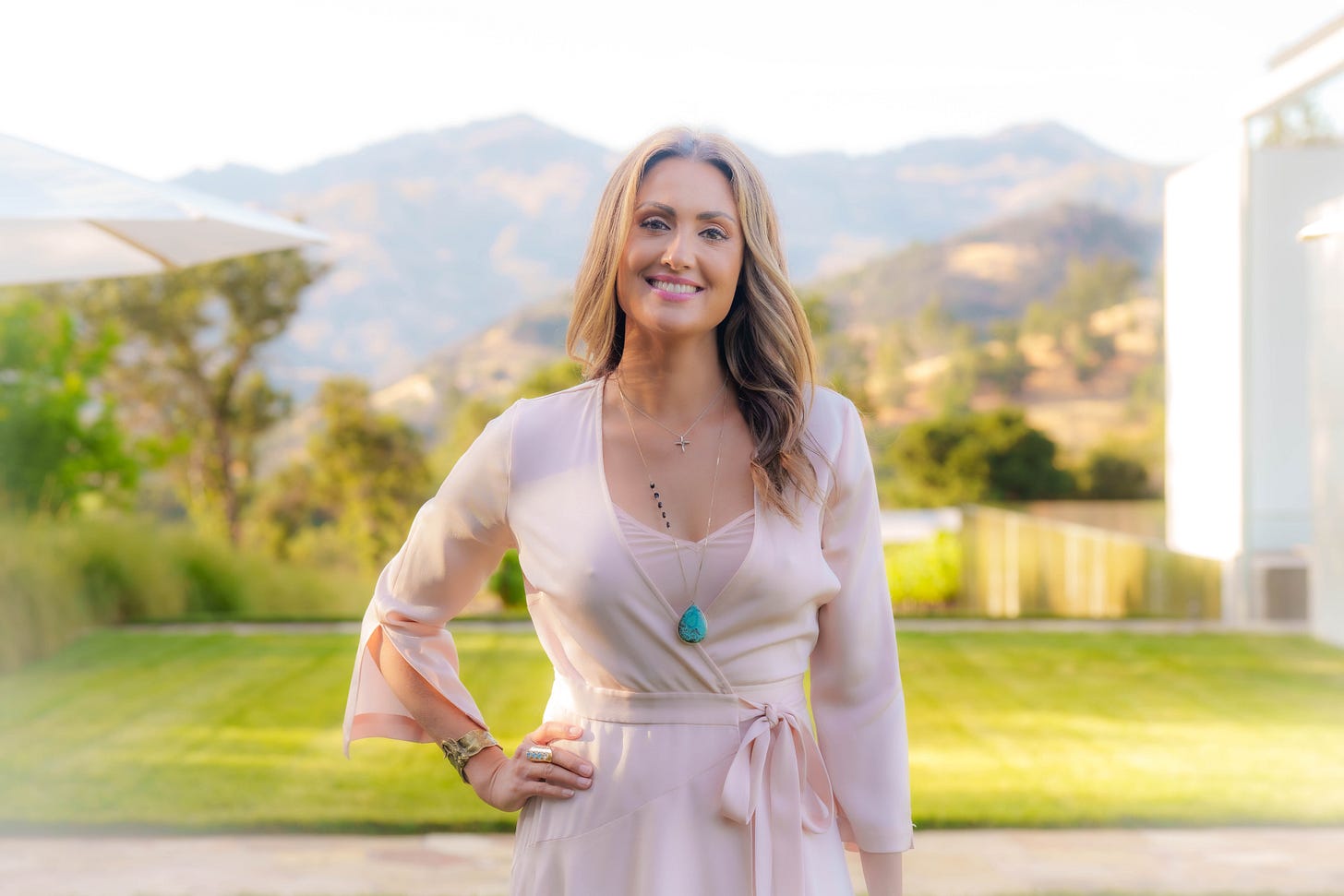

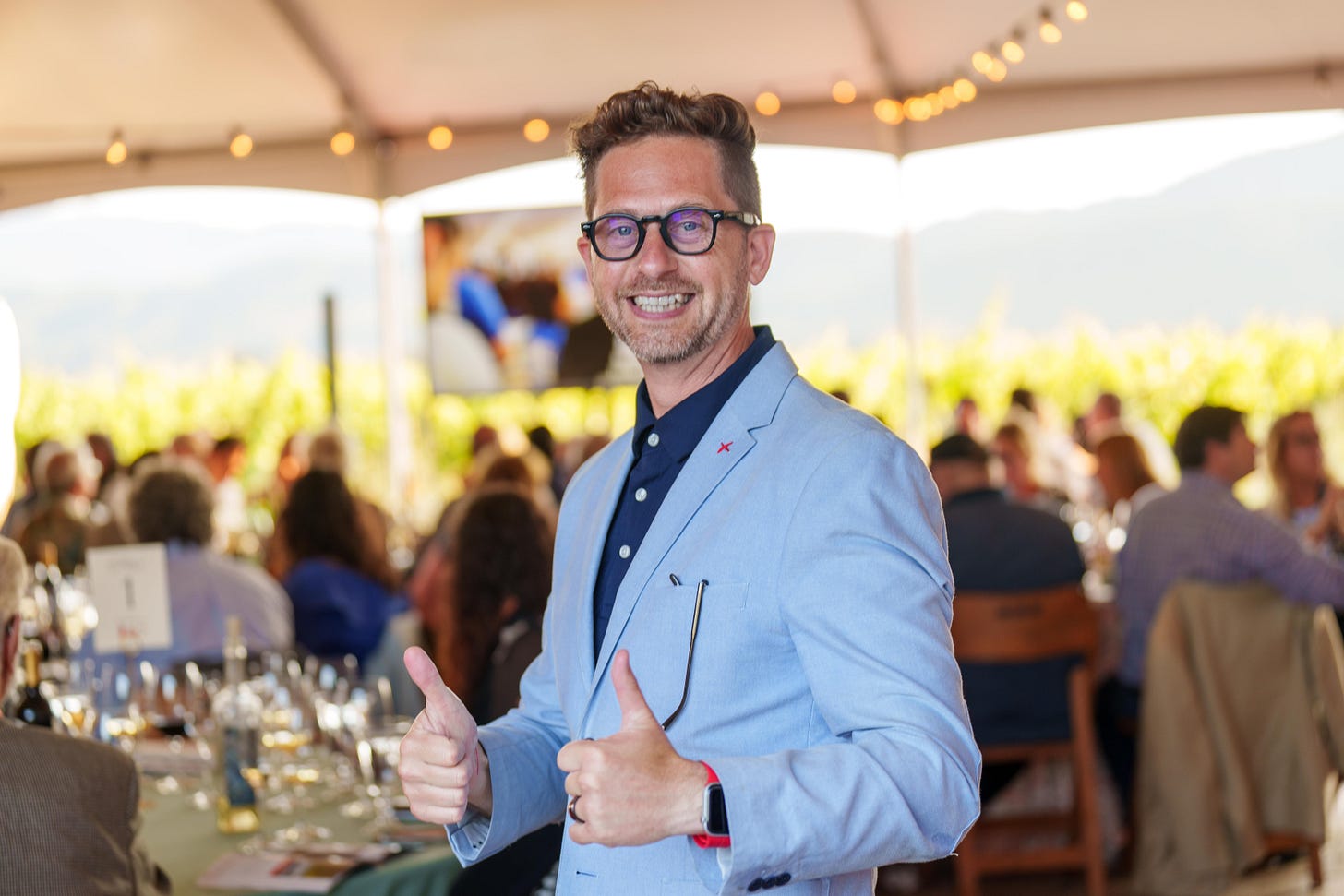
Neotempo should be a featured story on its own...I love what they’re doing with glass bottles.
Thank you for all your support, Dave, and the Napa Valley Features team!! It takes a village!